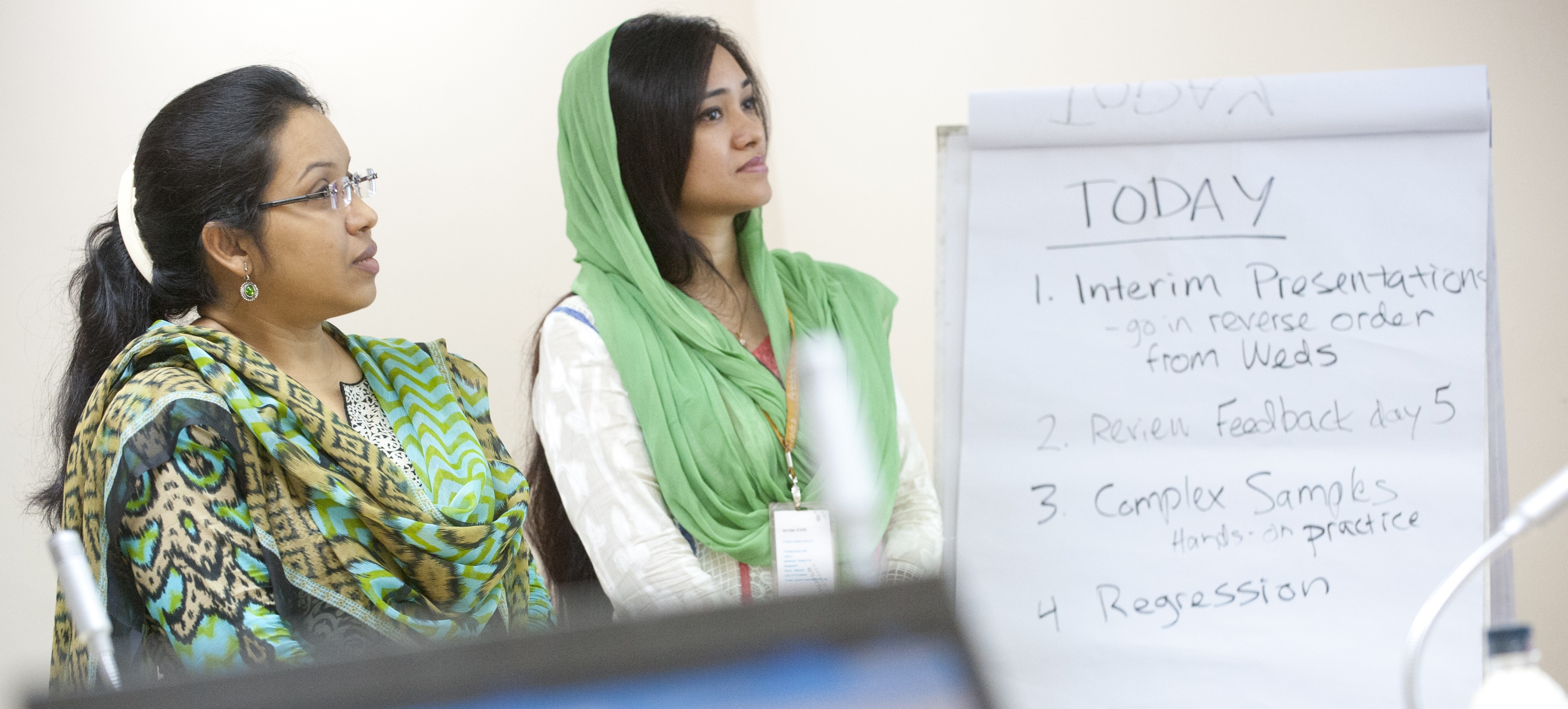Journal Articles
Search our database of 1000's of peer-reviewed journal articles that feature DHS data.
Featured Studies
Featured research topics go beyond a single research paper and often include multiple publications and user-friendly summaries and dissemination materials.
The DHS Fellows Program
Researchers in DHS countries work with DHS analysts to design, analyze, and write a publishable paper.
DHS Analysis Blogs
Read more about our recent research, innovative methods, and success stories.
Research and Further Analysis

The DHS Program's in-house Research and Analysis team conducts rigorous, timely, and innovative mixed-methods research on topics related to global public health, demography, and social epidemiology. Our team also trains, mentors, and closely collaborates with fellow researchers and stakeholders who are driven to utilize DHS Program surveys and other survey data to inform programs and policies in various countries and contexts.
Visit the publications search for a full list of publications. Also, go to the journal articles search for a full list of published journal artilcles that feature The DHS Program data.
DHS Research Reports
Sep 2014
The Peru Continuous DHS ExperiencePeru was the first country to undertake a continuous survey (CS) within The Demographic and Health Survey (DHS) Program.
Topics: --
Sep 2014
Validity of Data on Self-reported HIV Status in Malawi and Uganda and Implications for Measurement of ARV CoverageObjective: To assess the validity of self- reported HIV status in two population-based surveys—the 2010 Malawi DHS and the 2011 Uganda AIS—to determine whether self-reported HIV status can be used as a basis for measuring indicators of use of services such as ART and PMTCT by people living with HIV (PLHIV).
Topics: HIV/AIDS
Sep 2014
Evidence of Omission and Displacement in DHS Birth HistoriesThis report assesses the quality of the birth history data in 192 DHS surveys conducted since 1990.
Topics: Fertility and Fertility Preferences, Infant and Child Mortality
Sep 2014
Quality and Consistency of DHS Fertility Estimates, 1990 to 2012This report evaluates the quality of birth history data from 182 DHS surveys conducted in 69 countries since the 1990s (DHS Phase II onward).
Topics: Fertility and Fertility Preferences
Sep 2014
An Assessment of DHS Maternal Mortality Data and EstimatesThis report evaluates the data quality of sibling survival history in DHS surveys and assesses its impact on maternal mortality estimates.
Topics: Maternal Mortality
Sep 2014
Potential Bias and Selectivity in Analyses of Children Born in the Past Five Years Using DHS DataThis paper investigates potential biases in analysis of data for only last-born children or non-last-born children instead of all children, and in the analysis of succeeding birth or pregnancy intervals, in both the five-year period preceding The Demographic and Health Surveys (DHS) Program surveys and for longer periods of time.
Topics: Child Health and Development, Infant and Child Mortality, Nutrition
Sep 2014
Intertemporal Comparisons of Poverty and Wealth with DHS Data: A Harmonized Asset Index ApproachOver the past 30 years, the Demographic and Health Surveys (DHS) Program has conducted more than 300 household surveys in over 90 countries.
Topics: Household and Respondent Characteristics, Wealth/Socioeconomics
Sep 2014
Linking DHS Household and SPA Facility Surveys: Data Considerations and Geospatial MethodsThis report examines the potential benefits of linking Demographic and Health Surveys (DHS) data and Service Provision Assessment (SPA) survey data to answer research questions.
Topics: Child Health and Development, Geographic Information, HIV/AIDS, Maternal Health
Sep 2014
Child Survival by HIV Status of the Mother: Evidence from DHS and AIS SurveysMother-to-child transmission of HIV is the predominant cause of HIV infection in children.
Topics: HIV/AIDS, Infant and Child Mortality, Maternal Health
Sep 2014
Use of Family Planning in the Postpartum PeriodThis report used reproductive calendar data from 43 Demographic and Health Surveys (DHS) representing 61 percent of the developing world’s population (excluding China) to examine the use of family planning in the postpartum period.
Topics: Family Planning, Maternal Health